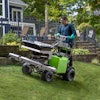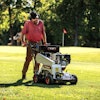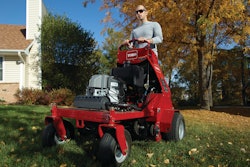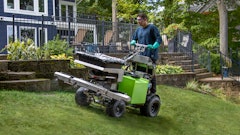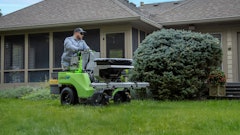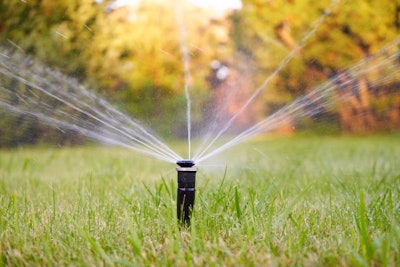
As the temperatures continue to climb this summer, dry conditions and hungry pests can quickly sneak up on turfgrass, creating stress and damage.
Warm temperatures and dry weather can decrease or eliminate soil moisture. This can reduce the root and shoot growth, cause grass leaf blades to wilt, and change the once lush green turf color to a pale green or brown. Grass plants suffering from moisture stress can be prone to other problems including pest issues.
The experts at TruGreen offer the following summer lawn care tips. 
Adequate Water. It is very important for turfgrass to receive enough moisture to withstand the summer heat.
Thorough watering once or twice a week is better than frequent, light sprinkling. Measure water with a rain gauge or place a tuna can under your sprinkler system to catch water. When the tuna can is full, the turf has received the recommended one to two inches of water per week.
Make sure the irrigation system is doing its job. Uniform watering can help avoid brown spots and keep turf healthy from root to tip. Check the irrigation system weekly to make sure each section of the turf is being supplied with the appropriate amount of water.
Summer Pests. As the sun shows up during the summer months, turf-damaging insects, diseases and difficult weeds begin to appear. Some come to eat and others show up to battle the grass plants for space.
- Southern Chinch Bugs: Primarily a pest of St. Augustine turf, this tiny bug can quickly damage lawns by extracting juices from within the plant. The damage can first look like drought stress, but under closer examination it can be chinch bug damage.
- General Turf Pests: Other turf pests seen in the summer months are grubs and turf caterpillars. It is important to inspect the turf and look for feeding symptoms throughout the summer. If populations are beyond the normal threshold, insecticide applications would be recommended to eliminate permanent turf damage.
Drought Stress, Disease and Weeds. High humidity and excess moisture can encourage disease, like brown patch, to appear on turf. The leaf blades of the grass plant will show bleached lesions and signs of browning when infected by this disease. Improved air flow and soil drainage will help discourage brown patch. A fungicide can be applied to stop the spread of this disease but this will not repair already damaged areas.
Difficult-to-control grasses like wild bermudagrass and dallisgrass can invade areas that are thin or bare and can spread quickly during the summer. A thick and healthy turf will help eliminate these weeds from appearing, but these weeds can still thrive and compete with vigorously growing turf. Unfortunately, if these grassy weeds take over, it may require renovation or living with a mixture of grass types.
A vigorous and healthy-growing turf will recover more quickly from the summer heat and resist invasive pests like weeds and insects. When caring for turf, remember these tips:
- Proper watering techniques and timing are critical for healthy turf. Proper fertility is essential for healthy root and shoot growth, which helps the turf plant survive during hot and dry months.
- For warm-season turf, consider aerating the lawn this summer to increase the amount of oxygen, moisture and nutrients available to your plants’ roots. The aeration process opens up the soil profile, which promotes root growth and increases the depth of the root system. A turf with a deep and extensive root system can tolerate drought by being able to extract moisture from a deeper soil profile.
Beat the temperatures and pests this summer. For more expert tips or to determine the best plan to maintain healthy turfgrass during warm weather, consult a professional such as TruGreen.
